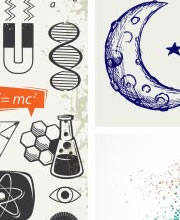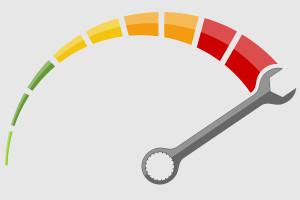
In part #1 of our Stock Photography Site Cage Match we took a close look at iStockphoto and 123RF to see how they matched up when pitted against each other.
As we did in the first part, we will be rating each site in three categories:
- Usability/UI design
- Value for money
- Available range
A quick recap: Both sites performed well and there was very little in it when it came to the final scores, with iStock scoring 4/5 and 123RF pipping the older site to the post with a score of 4.5/5.
When it came to the crunch, 123RF was simply better value for money. Both sites had a massive amount of images on offer, with 123RF again just performing a little better thanks to how often new images are added.
Overall it was a close call and I do tend to feel that these sites are all good quality with many of them offering a similar experience in search, aesthetics and stock.
Today, we’re going to be looking at two more sites: Fotolia and Shutterstock, both names which I’m sure many of you are already familiar with. Again, we will give each site a score, based on each site’s strengths and weaknesses and we’ll be restricting our search to images and illustrations.
Site #3: Fotolia
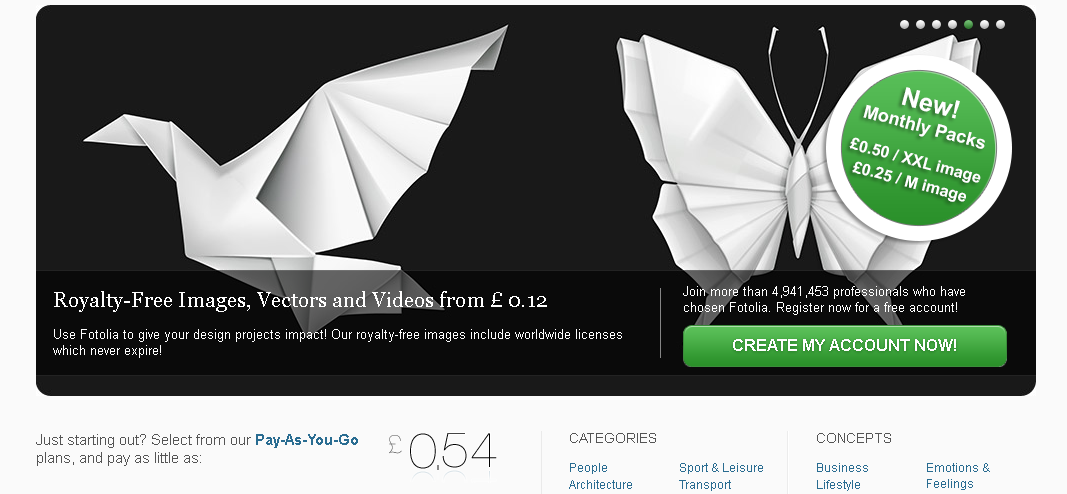
Based in New York and founded in 2005, Fotolia is a community-based stock image site with more than 29 million photos, vectors, illustrations and videos which are crowdsourced.
The site claims to be ‘devoted’ to offering affordable content to its substantial user base numbering more than four million.
Fotolia attributes its success to the large community of artists, photographers, graphic designers and the select list of well-known agencies that it works with. Images that are uploaded to the site are all moderated, which ensures continuity when it comes to the standard of the stock. There are plenty of images to be found on this site and it again seems highly unlikely that you would struggle to find what you’re looking for here.
As well as being competitive on price, Fotolia claim to pay the highest commission on the market to its photographers and artists and the site sees millions of downloads per year. The images found are all offered on a royalty-free basis, so can be used to any design or document project with no time limit on when images can be used.
The site was the first in the world to offer crowdsourced images alongside professional on the same site and its success is evident as it is now a global concern with websites in 15 languages and 23 regions.
Pricing
Fotolia’s pricing structure is similar to that of iStock and does seem to be a little on the pricey side when compared to 123RF. There are two payment options, you can either pay using the pay-as-you-go credits system or by monthly subscription. Either way, you have to sign up to the site first before you can purchase any images.
Credits
The minimum purchase for credits is 10 credits and these can be used within 365 days of purchase. Credits cost around just under a dollar each but of course it’s very likely that you’ll need at least several credits to purchase an image.
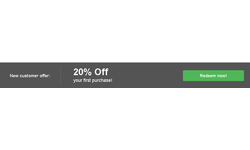
Currently the site is offering a 20% discount for new customers, so if you don’t already have an account, then it might be worth joining for this reason to get some decent images at the reduced price. Saying that, it’s really only worth it if you’re buying in bulk.
Subscriptions
When it comes to subscriptions, you can choose to go for a daily or monthly plan, both of which allow you to download images at the highest resolution from the 25 million files available to subscribers. Subscriptions are all subject to auto-renewal, so this is something that you should definitely be aware of if you’re considering trying it out.
We’ve all signed up for something, barely used it and then been concerned when unexpected cash is leaving our account, after all.
Fotolia also offers customized plans for companies which use in excess of 10,000 images over the course of a year. However, you need to call direct in order to be able to set this up and access it.
The daily subscription allows you to download between 25 and 250 images per day from around $0.20 per image or vector. Monthly subscriptions are more flexible, allowing you to download between 5 and 5000 files per day and according to Fotolia, this is its most popular pricing plan.
Hi-res images and vectors on the monthly plan will cost around $0.70 per file and all unused downloads in each month are rolled over to the next, so that you don’t lose out if you’ve had a quiet month or have been off on your vacation.
However, this only applies if your account remains active and you renew your subscription for the next month.
Subscriptions can be purchased for 1, 3 or 6 months at a time, or for the entire year and the longer the subscription that you choose, the less you pay for your images.
For the daily subscription package, you choose the amount of downloads that you want per day, from 25 to 500, choose how long you want the subscription to run in months and pay accordingly. Prices start at around $250 for the basic plan on a one month/25 image basis, up to $3,825 for a one month/500 image basis.
Monthly packages start at around $25 for 5 XXL images per month up to around $875 for 1000 XXL images per month.
You can choose an individual plan, ideal for lone freelancers, or there’s the option to open a multiple users account which allows a company to share access to the subscription. This is a handy addition as it means that an administrator can allocate downloads to different designers whilst maintaining control over what’s being purchased.
All-in-all, pricing seems to be a little less than iStock but not quite as reasonable as 123RF. However, with the current offer for new customers, it’s worth checking it out if you’re looking to download some stock at a discount.
Rating: 4/5
Search performance
Using the same key term ‘business’ first off the site returned results quickly and they were relevant to the term and of a high quality. There were once again plenty to trawl through with more than 3 million images, vectors and illustrations returned.
Again, to the left of the page, you can further refine results by:
- Concept
- Color
- Category
- Recency (one week to two years)
- Collection (standard, infinite, instant, subscription)
- File type
- People (with, without)
- Orientation
- Sizes
- Max price
- Descriptive
So the refinement options are pretty comprehensive and can really help you to hone your search rather than go through the thousands of pages of results. Again, the search results are returned on a tiled page, and these display a larger image on hover, or you can click to go to purchase the image.
There’s also the usual dropdown menu which allows you to sort by relevance, newest, and so on.
A second search for ‘tablet PC’ also performed well, with more than 109,000 results returned; there’s certainly no shortage of images on this site either.
Rating 4.5/5
User Interface
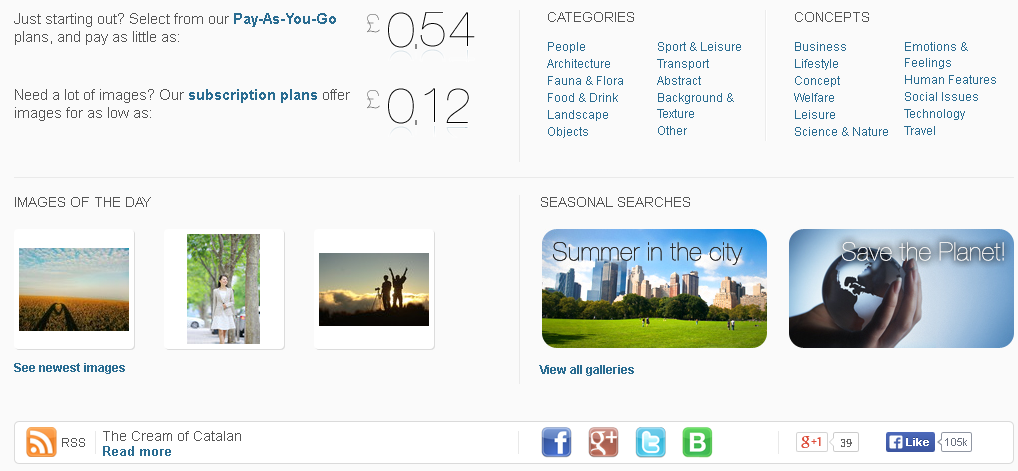
This site is a little different on the front page to the others we’ve looked at so far in that whilst it has a large image to the top of the page, it doesn’t have the tiled effect on the lower half of it.
This meant that it’s perhaps not quite as aesthetically pleasing as the other two sites we’ve looked at so far. The front page features ‘categories’ and ‘concepts’ as textual links with some pricing info to the left and a box displaying three small ‘images of the day’ which aren’t particularly clear.
This is a shame as if you’re a member of the community and are featured in this way, then you’d hope that the image would be displayed in an attractive manner – but it’s not. The images show up larger on hover, but I feel that this could have been done better for both the artist/photographer and the site visitor.
With regards to navigation, this was simple and easy to use, with dropdown menus to the top to take you to various parts of the site and the footer area containing other information such as about us etc. You can also browse by collection but again, I personally don’t like the layout here as much as the previous two sites.
Rating 3/5
Selection of images
The site appears to have more images available than iStock whilst being perhaps on a par with 123RF judging by the results returned on search. The quality of the images is excellent and this is no doubt down to the worldwide moderators that the site employs.
Again, you won’t go short when looking for images on the site and if it’s the case that Fotolia do indeed pay higher than every other site when it comes to photographers and artists, then this would probably be enough to sway me into using this site over iStock, especially due to the controversy that iStock suffered.
Rating 5/5
Overall rating: 4/5
Fotolia is a nice site that’s perhaps not quite as pretty as the other two, but it’s still intuitive and has a nice selection of images which are updated by the community frequently.
Price-wise it’s on a par with 123RF and cheaper than iStock so is definitely competitive and one worth consideration, especially given that it pays members well.
Site #4: Shutterstock

On putting Shutterstock into Google, I came across two landing pages, which was a first. The first one I came to was a very clean sign up page, as shown in the image above which uses principles found in growth hacking: a nice clean page, with a clear call to action.
The second page I came to was the actual site, which was equally clean, well-designed and aesthetically pleasing.
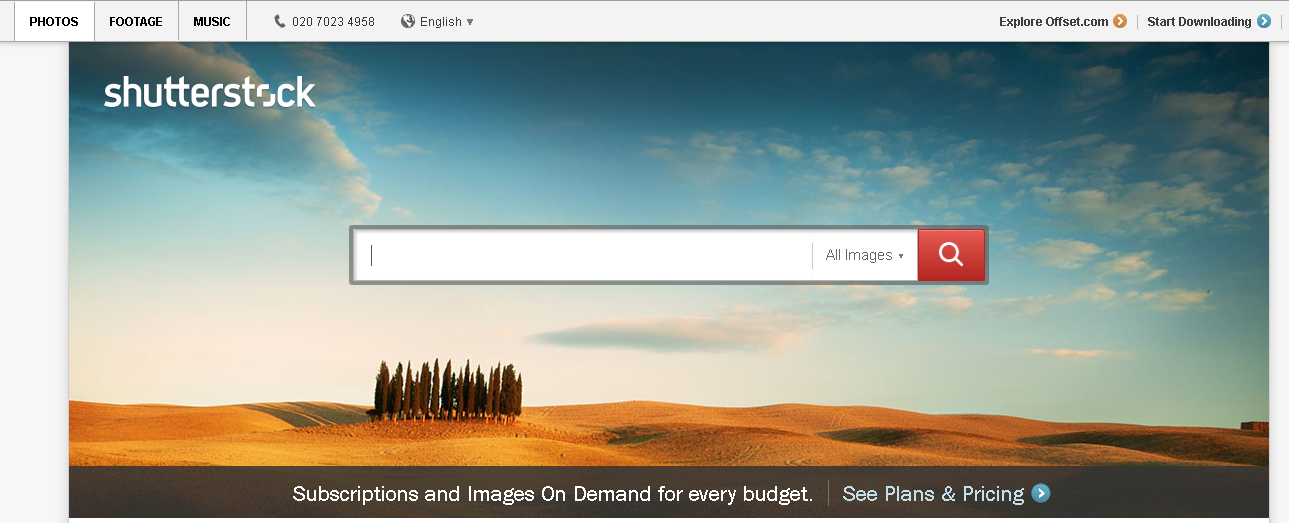
Shutterstock itself was founded in 2003, making it one of the pioneers of the stock photo world along with iStock. It currently has sites in more than 150 countries worldwide and 20 languages. Again, the site seeks to marry creative professionals with the best images, illustrations, video and vectors which are sourced from worldwide contributors.
The site is highly visual, relying heavily on images to do its talking for it, which is really what a site that’s all about photos should be doing. It’s emphasis is heavily on photography, rather than vectors and video and it even features staff images on its ‘About Us’ page, which is a nice touch, giving the site a human aspect to it.
Shutterstock has a huge image collection which currently stands at around 35 million and growing rapidly and all-in-all, the site feels much more considered when it comes to design and presentation.
Pricing
Shutterstock doesn’t use the credit system but instead works on a ‘licensing’ basis. You can choose from a standard or enhanced license, with the standard option also offering an ‘on demand’ feature which allows you to purchase blocks of 5, 12, 25 or 60 images at a time.
Prices for these start at around $50 to $235 with a choice of large or smaller images.
The standard license allows you to download up to 25 images per day of all sizes on a 25-day subscription and prices for this choice range from around $255 for a month to $2600 for the full year. This is the least confusing of all the pricing options on all of the sites we’ve looked at so far and seems to be very competitive too.
Overall I liked the clean and simple approach to pricing as for those unfamiliar with stock photo pricing models, the credits model is very confusing and often leads to people paying more than they thought for the images that they choose.
Overall rating 5/5
Search performance
Search was once again intuitive and quick, returning well over 4 million results for the search term business. The images returned on the front page were all highly relevant and once more presented in a nice tiled layout with a larger image appearing on hover.
However, what the site was lacking was the now familiar ‘refine your search’ menu to the left of the page. After a little hunting I came across the link for refining the search next to the top search box which when clicked returned a dropdown menu which gave the options to filter.
This wasn’t very clear though, and it took me a second or two to find it. This could be a minus for some users as we don’t really want to have to look too hard for something that should be pretty obvious. In this regard I believe the other sites got it right.
The filtering options were also not as comprehensive as other sites, with options being:
- Image type
- Category
- Orientation
- Keywords
- Contributor name (really? I wouldn’t imagine that’s popular…)
- People
- Editorial
- Color
The filtering menu also dropped down over the top of the images, which didn’t particularly impress me.
A search for tablet PC was equally impressive, although perhaps not as good as Fotolia as it returned just over 80,000 results.
Rating 4/5
User interface
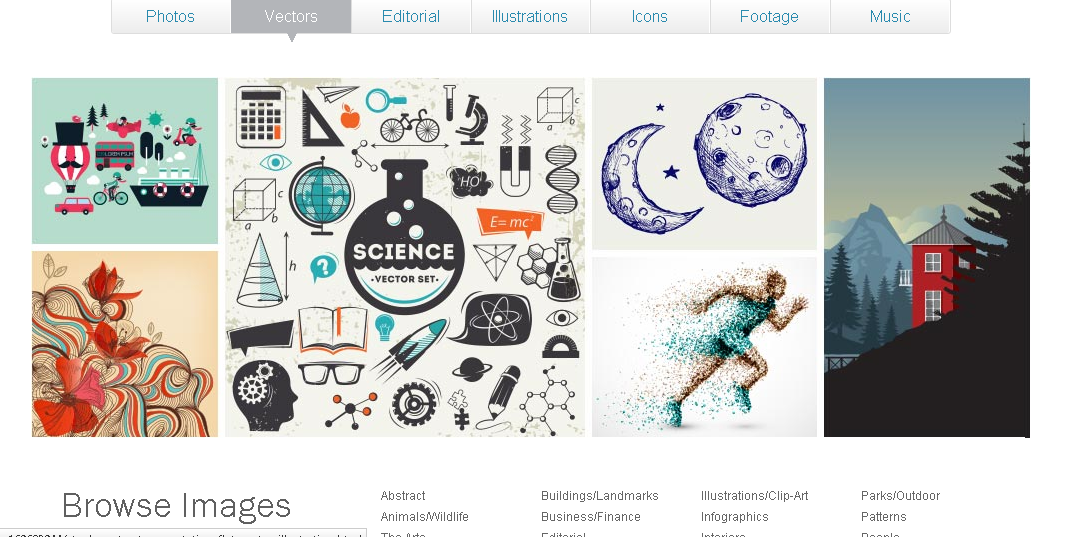
I really liked the look and feel of this site I have to say. The design is clean and modern and does what it says on the tin – it’s a photography/image site and that’s immediately apparent on landing on the site.
The front page is large and contains all of the information you need without being too in your face and contains nicely laid out imagery as well as textual links to take you to various categories and so on. This is so far my personal favorite in terms of how it’s presented, with the only thing really letting it down being the link for filtering search results as set out above.
For me, that’s something that overall lets down the UI as it needs looking for where a user should be directed to it simply.
A look around the site doesn’t disappoint either, all of the categories are well presented with clear images and pricing information also displayed clearly around the site.
Rating 4.5/5
Selection of images
Shutterstock has a fantastic selection of images which is greater than that of its competitors and this was clear from the search results that it returned. This site has more images than anyone else and possibly the only thing that’s not in its favor is the fact that its search refinement feature as well as being difficult to find is a tiny bit less comprehensive than the other sites.
Overall though, again you won’t be disappointed with the selection and Shutterstock also now allows you to search for music too, which is novel, if not a little puzzling.
Rating 4.5/5
Overall rating 4.75/5
I really liked Shutterstock and it definitely came out on top for me, even with the lack of a clear refinement feature. I liked the look and feel of the site, the simple pricing models and the selection of images that were available.
Whilst I also liked most of the other sites, Shutterstock was a little less generic than them and did break out of the norm when it comes to how every stock photo site looks.
This is especially true of the pricing model which does away with confusion that I often feel is almost designed up to confuse people with the credit system, as many assume that one credit equals one image – which of course it never does.
So, that’s my thoughts and round up of some of the most well known sites for sourcing stock images.
If you missed part #1 of our Stock Photography Site Cage Match you can read our thoughts on iStockphoto and 123RF here.
Please do feel free to share your thoughts in the comments section and let us know if you agree or if there are relatively undiscovered stock photo sites that you can share with us!
<
Kerry is a prolific technology writer, covering a range of subjects from design & development, SEO & social, to corporate tech & gadgets. Co-author of SitePoint’s Jump Start HTML5, Kerry also heads up digital content agency markITwrite and is an all-round geek.
